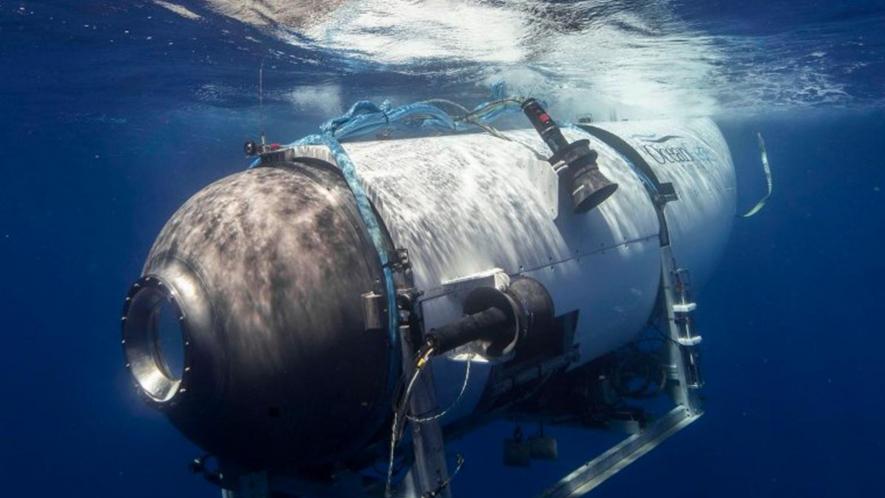Race Against Time: Search Intensifies as Oxygen Dwindles in Missing Titanic Submersible

Image Courtesy: Twitter
Delhi: The search for a missing submersible that was exploring the wreck of the Titanic has entered its fourth day, with concerns mounting over the dwindling oxygen supply for the five passengers on board.
A collaborative effort involving vessels and specialised equipment from the United States, United Kingdom, Canada, and France has been deployed to join the search for the missing submersible named Titan. The Polar Prince, the research vessel from which the Titan was launched, serves as the command centre for the search, situated near the Titanic wreck site. Despite nearing the theoretical limit of its oxygen capacity, officials remain hopeful of a successful rescue operation, The Guardian reported.
Experts have reportedly emphasised that the actual oxygen supply within the submersible depends on various factors, including the breathing rate, physical activity levels, and the composure of the passengers on board.
On Wednesday, rescue teams reported hearing underwater noises in the Atlantic, providing a glimmer of optimism, according to The Guardian's report. However, it is important to note that these sounds are inconclusive and do not confirm the survival of the crew. The discovery of the submersible raises questions about the necessary equipment required for retrieval, should it be located.
Equipment from the United States, Canada, the United Kingdom, and France is being dispatched to the search location, approximately 640km (400 miles) south of St John's, Newfoundland. An international coalition of rescue teams is conducting a sweeping search over a vast expanse of the North Atlantic in an effort to locate the Titan, which vanished nearly two hours into its dive on Sunday.
Officials involved in the search maintain a hopeful outlook. Captain Jamie Frederick of the US Coast Guard told The Guardian, "When you're in the middle of a search-and-rescue case, you always have hope."
Canada's coast guard minister, Joyce Murray, echoed this sentiment, emphasising the importance of maintaining hope as a collective human effort to locate and ensure the safety of the explorers.
The search is concentrated in an area where underwater sounds have been detected, yet their origin remains unknown. Naval subsurface acoustics experts are analysing recordings to gain further insight.
Remotely operated deep-sea vehicles (ROVs) from Canada, the United Kingdom, and France are en route to the site, accompanied by existing vessels on the scene. Magellan, the first company to provide a complete 3D scan of the Titanic wreck, has been requested by OceanGate, the operator of the Titan submersible, to mobilise and transport necessary equipment and crew to St John's, Newfoundland, as quickly as possible.
The French ROV named Victor 6000, capable of operating at depths of up to 6km (20,000ft), will be deployed to reach the 3.8km depth where the Titanic lies. It can transmit visual data, including photos, videos, and 3D reconstructions, back to its launch vessel through an "umbilical cord."
A US ROV, loaded onto a Canadian vessel, is also en route, according to Horizon Maritime, the company co-owning the support ship Polar Prince. However, it remains unclear if this is the same ROV referenced by the US Coast Guard.
Get the latest reports & analysis with people's perspective on Protests, movements & deep analytical videos, discussions of the current affairs in your Telegram app. Subscribe to NewsClick's Telegram channel & get Real-Time updates on stories, as they get published on our website.














